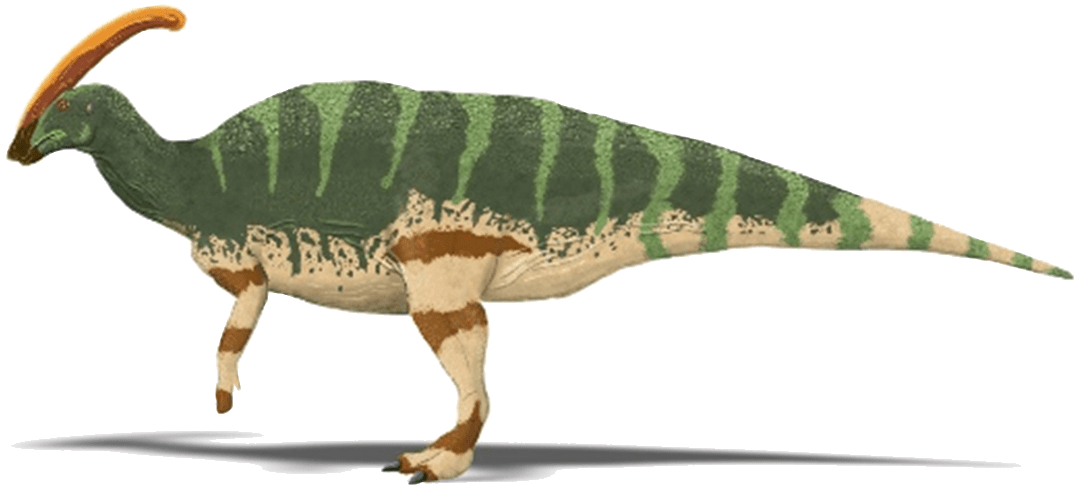
Parasaurolophus was a duck-billed dinosaur with an extremely long, backward-sloping, bony crest. This was hollow and as large as the rest of its skull. Researchers believe that this served to produce a foghorn-like sound at low frequencies.
Parasaurolophus was a herbivore that ate pine needles, leaves, and twigs. Fossilized stomach contents have been found, consisting mainly of terrestrial plants.
Parasaurolophus probably migrated in herds like other duck-billed dinosaurs.
| Profile | Parasaurolophus |
|---|---|
| Prehistoric Era | Upper Cretaceous (Late Campanian) |
| Order | Ornithischia |
| Suborder | Ornithopoda |
| Family | Iguanodontia |
| Tribe | Hadrosauridae |
| Genus | Parasaurolophus |
| Species | Parasaurolophus walkeri, P. tubicen, P. cyrtocristatus |
| Height | 4 meter |
| Length | 9.5 meter |
| Weight | 2.5 tons |
| Territory | Alberta (Canada), Utah and New Mexico (USA) |
In 2009, student Kevin Terris unearthed a young (about 1 year old) Parasaurolophus in Grand Staircase-Escalante National Monument, southern Utah. He named the specimen "Joe."
Interestingly, he found only a small bump on Joe's head . Terris suspects that it did not develop into the curved adult tube until further growth.
It was once thought that the long crest of Parasaurolophus was a kind of snorkel and served it to breathe when it grazed aquatic plants. But this idea did not hold, because although the comb looks like a snorkel, the tip is completely solid and has no opening.
A later discovery of the tracks of the front paws of duck-billed dinosaurs has definitely shown that Parasaurolophus did not have webbed feet. In fact, in some ways, just the opposite seems to be true. The extra flesh on their front extremities did not form webbed feet, but rather a large cushion pad like those found on the feet of camels.
Image source: Leandra Walters, Phil Senter, James H. Robins, CC BY 2.5 https://creativecommons.org/licenses/by/2.5, via Wikimedia Commons
Size: Marmelad, CC BY-SA 2.5 https://creativecommons.org/licenses/by-sa/2.5, via Wikimedia Commons
Skeleton: Scott Hartman ([1]), CC BY 4.0 https://creativecommons.org/licenses/by/4.0, via Wikimedia Commons